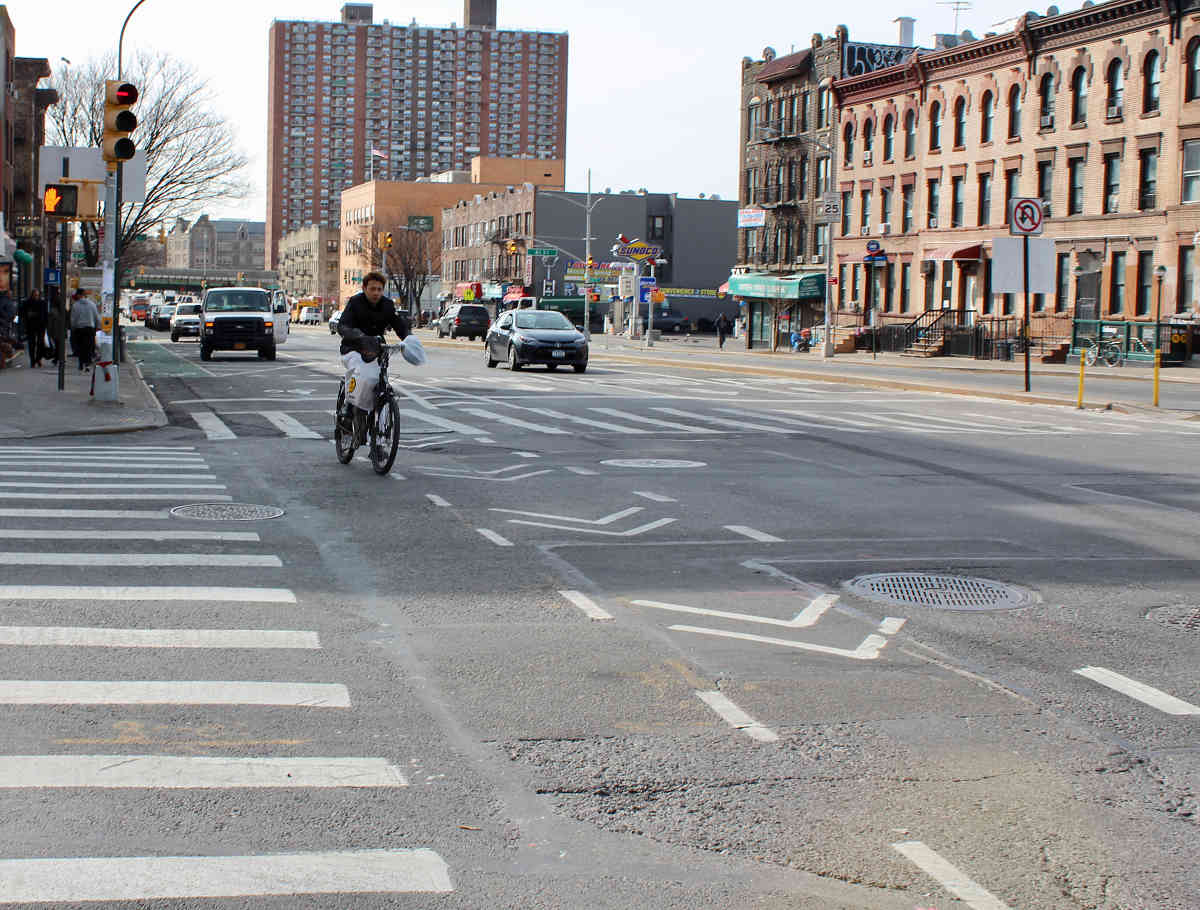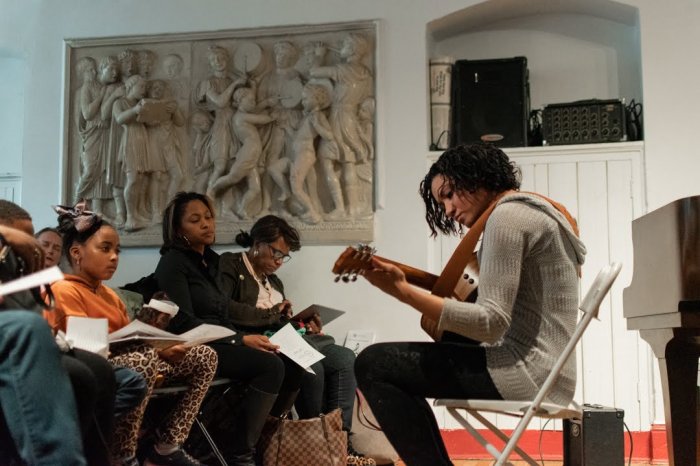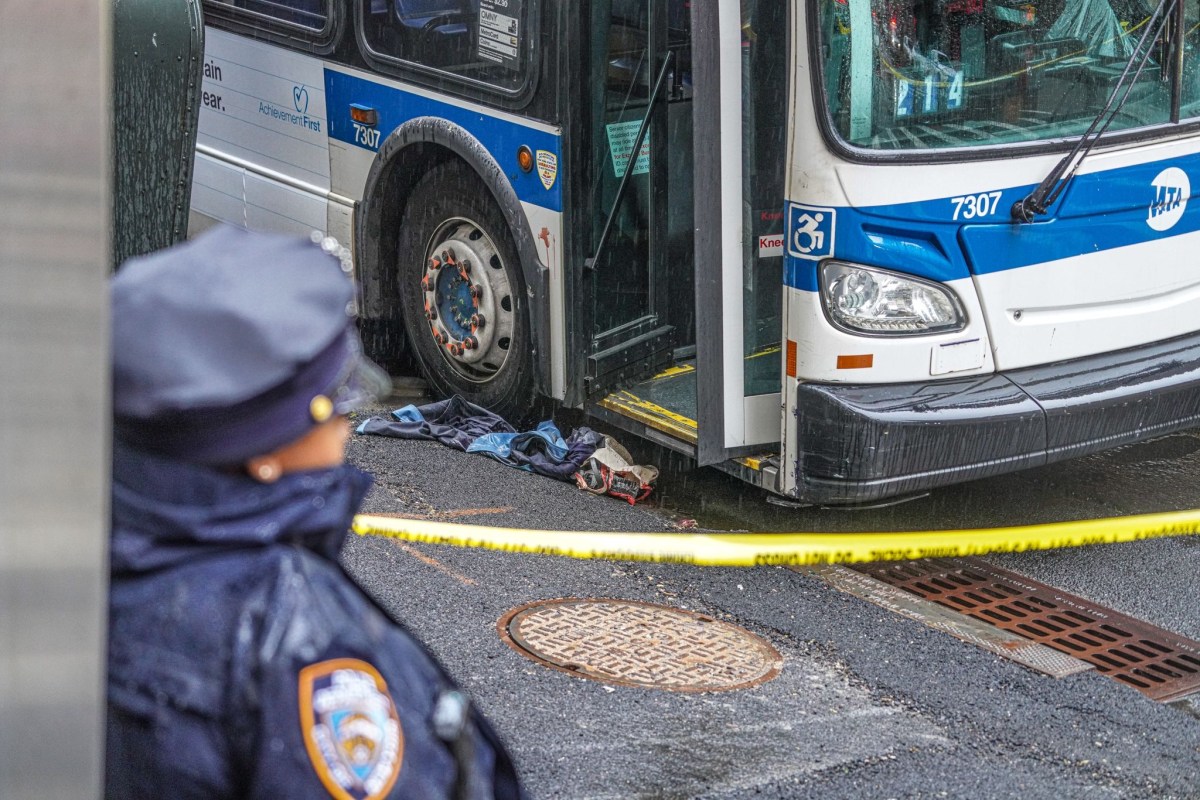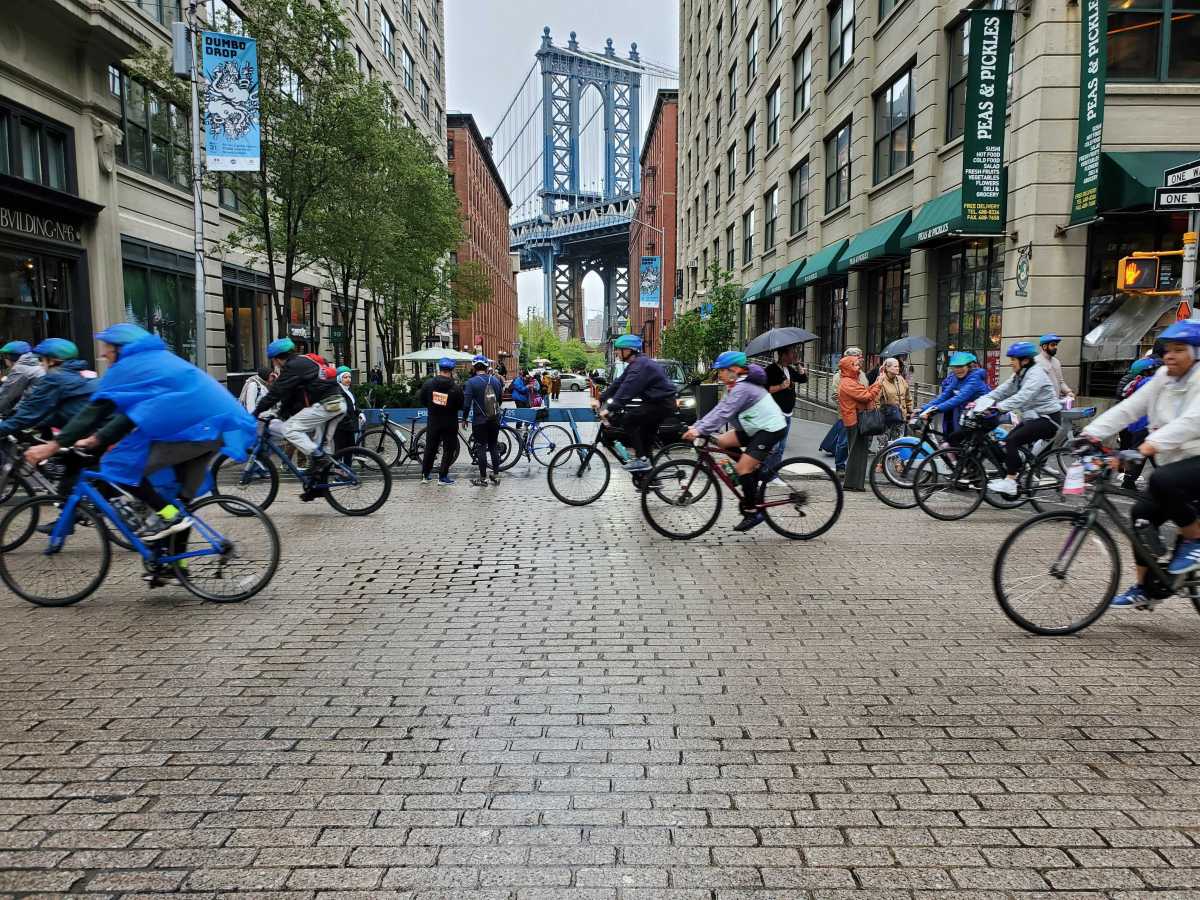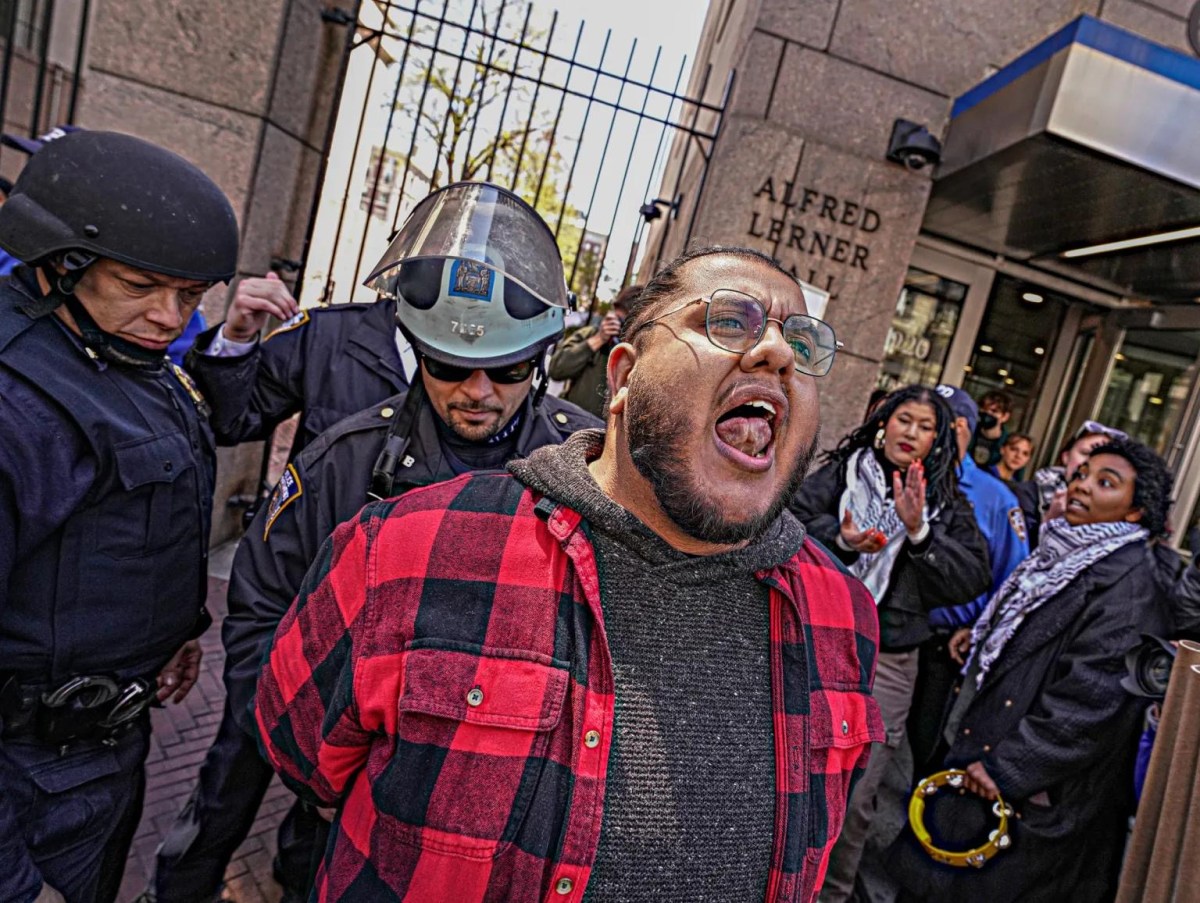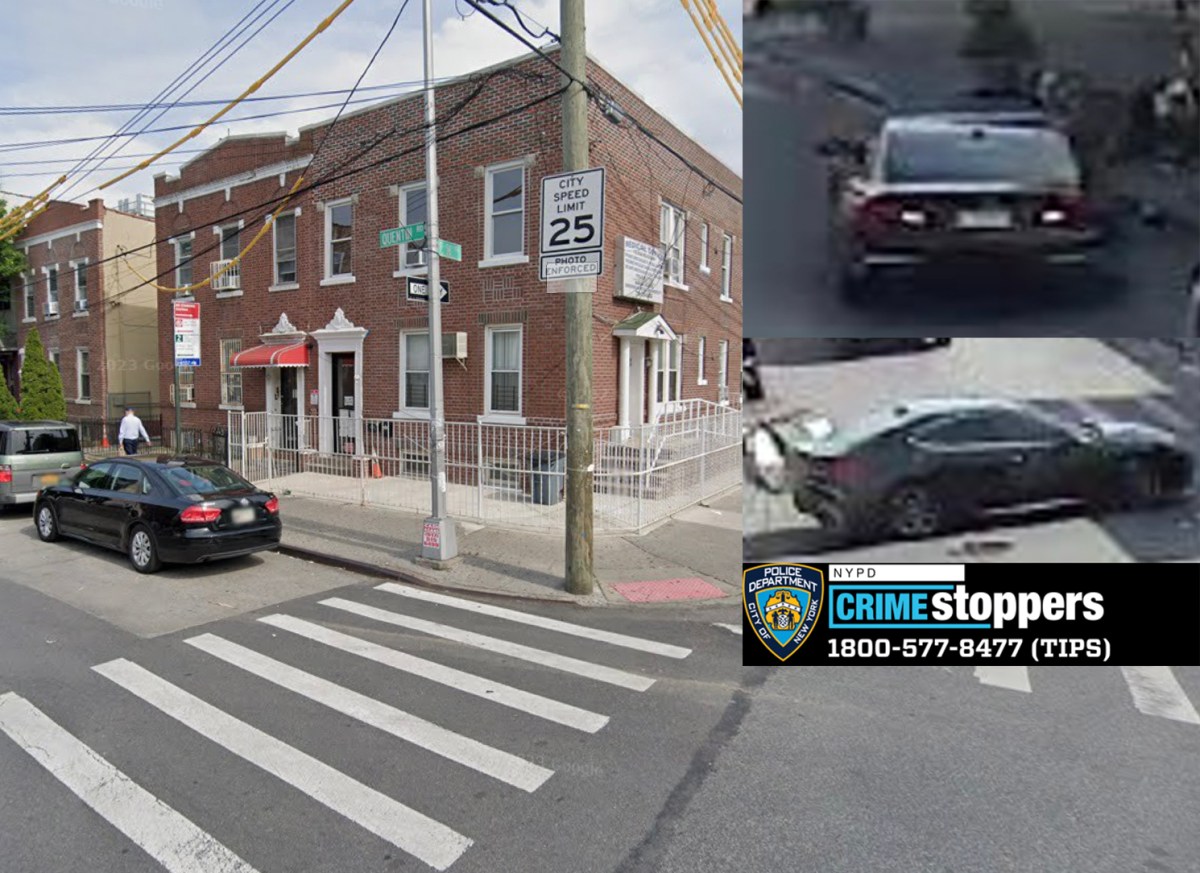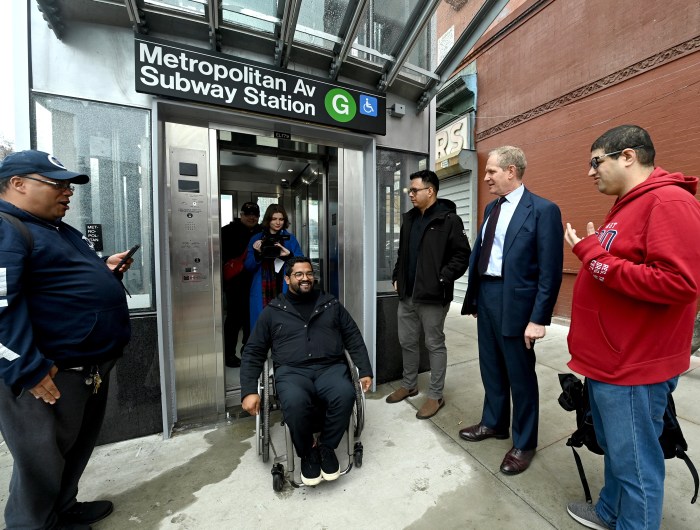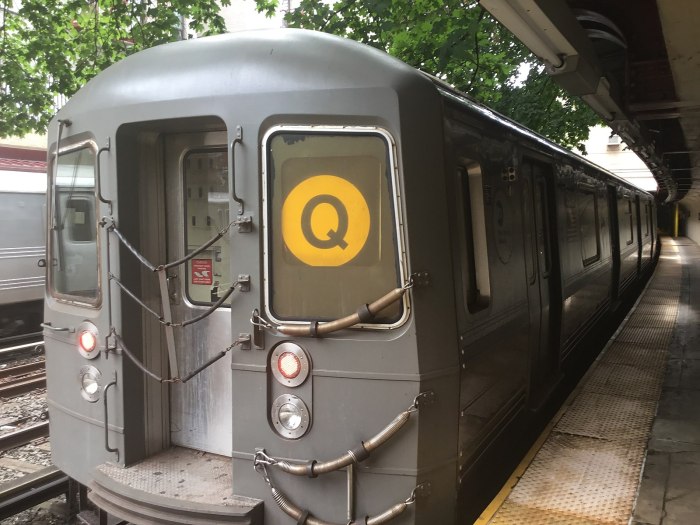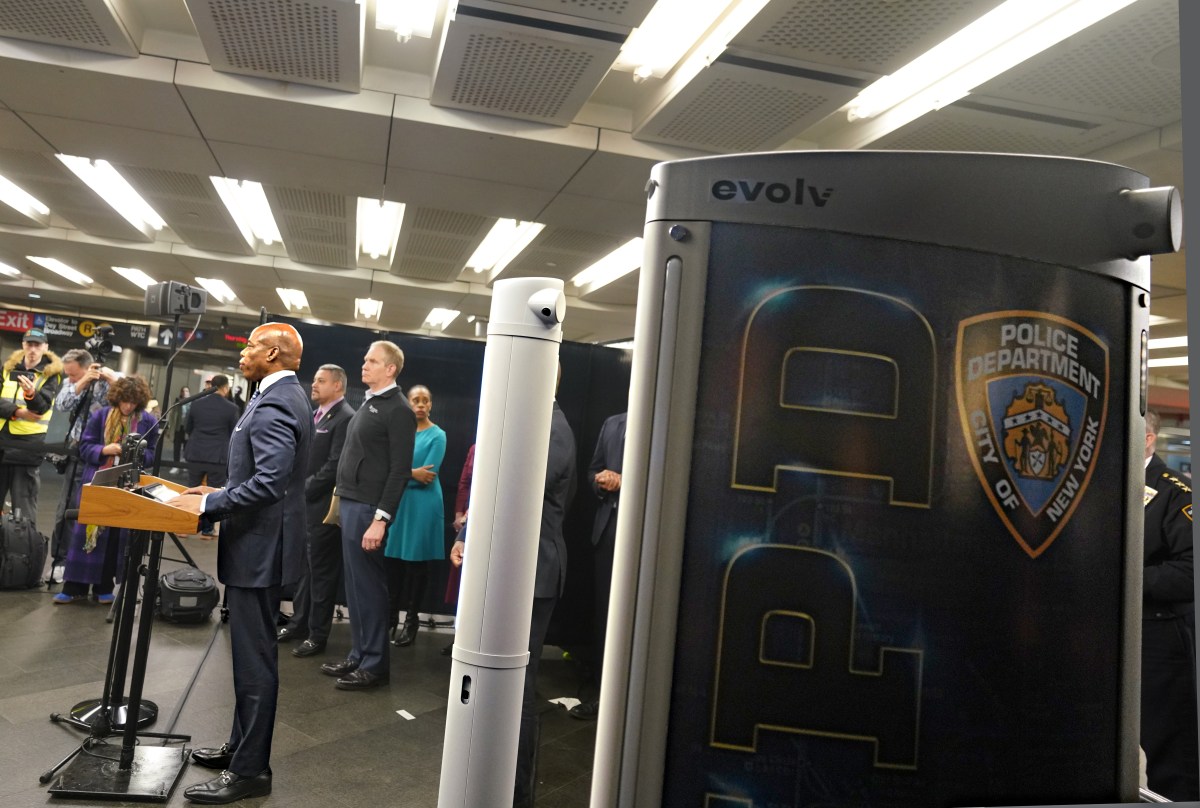The city endangered cyclists by painting bike lanes on Fourth Avenue that abruptly end at construction sites where traffic is reduced to one lane, forcing bike riders to choose between their wheels and their lives, according to one outraged bicyclist.
“The construction makes it bad because you can’t see and there’s a ton of debris, so you can risk getting a flat and biking over the debris in the bike lane, or you can swerve into traffic,” said Sarah Ziglifa, who commutes on bike from her Fort Hamilton home to her job in Manhattan most days. “I signal and merge and hope for the best.”
Last fall, workers with the city’s Department of Transportation finished painting the first part of the forthcoming protected bike paths on Fourth Avenue — which when complete will allow cyclists to pedal from Bay Ridge to Atlantic Avenue in both directions via separate lanes along the Bay Ridge– and Downtown–bound sides of the road.
But work on the lanes, which now just span the avenue from 60th to 64th streets, halted last August to accommodate two construction projects led by the state-run Metropolitan Transportation Authority.
One of the projects required Transportation Authority workers to close one of Fourth Avenue’s two Bay Ridge–bound traffic lanes from 52nd to 59th street, in order to repair N- and R-line subway tunnels beneath the road, according to agency rep Amanda Kwan. That seven-block stretch of work was supposed to wrap at the end of last year, but is still in progress, according to Community Board 7’s district manager, Jeremy Laufer.
And amid that ongoing project, state transit leaders last month kicked off a second job to install elevators at the 59th Street subway station, which is expected to wrap this fall, and required shuttering one of Fourth Avenue’s two Downtown–bound traffic lanes between 58th and 60th streets to accommodate construction.
Both affected Fourth Avenue lanes are closed for most of each day, except for during a 2–8 pm window when they open to vehicle and bicycle traffic.
But cyclists must fight drivers for room on the road while riding through those areas due to the incomplete bike lanes, according to Ziglifa, who said motorists often erupt in bouts of road rage because they’re forced to share the street.
“You get beeped at and honked at and people flipping you off,” she said. “I’ve been clipped by a couple of side-view mirrors.”
On a recent weekday, and intrepid intern for this newspaper saw no less than seven cyclists hit the sudden end of the bike lanes at 60th Street in a 30-minute time span. About half of the riders frantically swerved around the work sites and parked cars to merge into the one open lane of traffic on either side of the Avenue and continue their rides, while the other half simply gave up, dismounting their two-wheelers to walk them on the sidewalk.
The construction nightmare more or less negates any convenience the partial bike lanes offer, according to another cyclist, who blasted the city and state agencies for not coordinating to complete the cyclists’ paths before the subway construction.
“You have these four blocks of pretty good protected bike infrastructure, and then on either end of it you’ve got kind of a traffic mess,” said John Tomac, who lives in Bay Ridge. “It would’ve been nice to see them put in the protected bike lane before the construction had started.”
Reps for the state Transportation Authority and city Transportation Department said officials at both agencies are working with each other to manage traffic, construction, and safety measures in the area.
And the city agency’s rep added that workers will paint another stretch of the bike lanes, from 38th to Second streets, later this year, with plans to install the 39th–59th street stretches of the paths after the state agency finishes its projects this fall.
But the current chaos on Fourth Avenue is reason to doubt those claims that city and state officials are keeping each other in the loop, according to Laufer, who predicted the traffic nightmare that the Transit Authority’s construction would cause at a community board meeting with agency reps last summer.
“I did not really understand DOT putting part of the bike lane that terminated at the construction site,” he said. “I think most city and state agencies are terrible at communicating with each other.”
— with Maya Harrison



